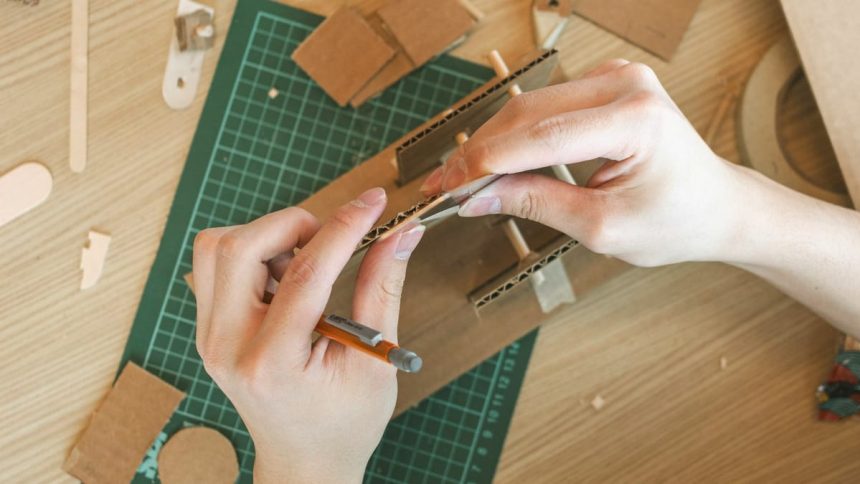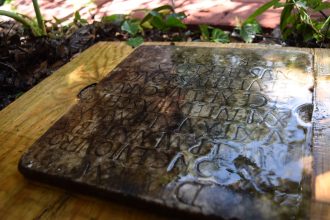Photo by Aedrian Salazar / Unsplash
- How Paper Scoring Creasers Work
- Mechanics of Scoring
- Different Types of Creasing Machines for Paper
- Advantages of Using Creasers in Different Industries
- Choosing the Right Paper Creaser for Your Needs
- Maintenance Tips for Paper Scoring Machines
- Frequently Asked Questions About Paper Scoring Machines
- Elevate Your Work with a Reliable Creasing Machine
Paper scoring creasers are essential tools used in industries where precise folding and clean lines on paper are vital. Whether in printing, packaging, or crafting, knowing how to operate these machines can significantly enhance the quality of the final product.
At its core, a paper scoring creaser creates a crease or an indentation on the paper, preparing it for folding. This process is crucial to avoid cracks and ensure a professional appearance. The technology behind these machines has advanced, offering various options to cater to different industry needs and preferences.
How Paper Scoring Creasers Work
Understanding the operation of paper scoring creasers is key to selecting and using them effectively. The focus lies on scoring versus folding, two distinct processes. Here’s a breakdown and some key aspects to consider:
- Scoring: This involves making a crease or indentation on the paper, pre-folding it along a straight line to facilitate a neat and precise fold. Scoring helps prevent surface cracks and maintains a professional finish.
- Folding: Following scoring, folding entails bending the paper along the score line to achieve a crisp edge without damaging the material.
Mechanics of Scoring
- A scoring machine employs a scoring wheel or bar.
- Even pressure is applied across the paper surface to create an indentation.
- The depth and position of the score can often be adjusted to accommodate various paper types and thicknesses.
Utilizing a paper scoring creaser ensures a uniform finish, enhancing the final product’s appearance. From manual options to automated machines designed for high volumes, different models cater to varying complexity levels.
Illustrative images or diagrams can further clarify the scoring process and demonstrate how different machines execute this task.
Different Types of Creasing Machines for Paper
Selecting the right creasing machine is crucial for paper creasing tasks, addressing needs across small craft shops to large industrial settings. Here are some common types:
- Manual Creasing Machines: Ideal for small-scale operations, offering precision and control but may be time-consuming for extensive projects.
- Automatic Creasing Machines: Suitable for high-volume work, automating the creasing process for improved speed and efficiency.
- Digital Creasing Machines: Equipped with digital controls for flexibility and precision, often storing multiple settings for custom tasks.
- Combined Creasing and Cutting Machines: Versatile options capable of creasing and cutting in a single step, commonly used in packaging and intricate paper crafts.
Each machine type presents its advantages and considerations. If you are looking for a creasing machine, check out the options available over at Just Binding.
Advantages of Using Creasers in Different Industries
Paper creasers are indispensable in many industries, enhancing processes and end products in various ways:
- Printing and Packaging Industry: Ensures clean folds without cracking, improving material quality and aesthetics.
- Crafting and DIY: Simplifies crafting processes for professional results in items like cards and scrapbooks.
- Education: Aids in producing neat and presentable materials for projects and instructional use in educational settings.
Incorporating case studies and industry examples highlights the versatility of creasing machines. Investing in these tools can lead to quality improvements, enhanced efficiency, and increased customer satisfaction, showcasing why creasing machines are essential in respective fields.
Choosing the Right Paper Creaser for Your Needs
Selecting the ideal paper scoring creaser is pivotal for achieving precise and professional outcomes. Consider these factors to make an informed choice:
- Budget Consideration:
- Manual machines are cost-effective for small-scale operations.
- Automatic and digital machines offer efficiency benefits for larger volumes.
- Volume Evaluation: Automatic machines save time for high daily volumes, while manual options suffice for occasional use.
- Material Compatibility: Ensure the machine can handle the paper thickness and type commonly used.
- Feature Assessment: Look for additional features like combined creasing and cutting, or digital controls.
- Space Evaluation: Assess workspace constraints to choose a machine that fits the available area.
Maintenance Tips for Paper Scoring Machines
Regular maintenance is essential to prolong the lifespan and efficiency of your paper scoring machine. Here are some upkeep tips to ensure smooth operation:
- Regular Cleaning: Use a soft cloth and suitable cleaning solutions to remove dust and residue.
- Scheduled Part Replacement: Replace worn-out parts like belts and blades promptly.
- Calibration and Adjustments: Calibrate the machine for accuracy and make necessary adjustments.
- Troubleshooting Common Issues: Be familiar with basic troubleshooting techniques to address common problems promptly.
- Consult the Manual: Refer to the machine’s manual or a maintenance guide for specific instructions.
Frequently Asked Questions About Paper Scoring Machines
Navigating the realm of paper scoring machines might be challenging given the features and technical aspects involved. Here are some common questions answered to guide your decision-making:
- What is a paper scoring machine?
A tool that creates indentations in paper to facilitate clean and accurate folds, crucial in industries where precise folding is essential. - How do I set up a scoring machine?
Position the machine on a flat surface, align paper sizes correctly, and adjust scoring settings per paper thickness. Refer to the manufacturer’s manual for accurate setup instructions. - What materials can I score with a creasing machine?
Most machines can handle various materials such as paper, cardstock, and light plastics. Check the machine specifications for material compatibility. - How to troubleshoot common issues?
Check for misalignments, worn-out blades, or improper pressure settings and refer to an external maintenance guide for detailed troubleshooting help.
If you are running into problems, check out this YouTube video on troubleshooting.
Elevate Your Work with a Reliable Creasing Machine
Choosing the right creasing machine enhances project quality and efficiency, offering benefits like:
- Enhanced Quality: Precision scoring and folding result in professional-looking outputs across printing, packaging, and crafting.
- Increased Productivity: Automation with creasing and cutting machines saves time for focusing on other creative aspects.
- Long-Term Savings: Quality machines reduce manual labor costs and paper wastage in the long run.
- Versatility: Various machine types cater to different needs and budgets. Research reputable brands for lasting performance.
Investing in a quality creasing machine elevates work standards and enhances overall effectiveness. Explore options to find a tool that best suits your requirements.

















